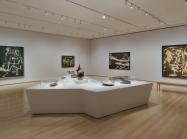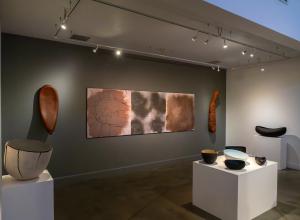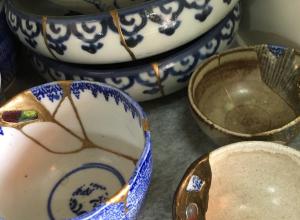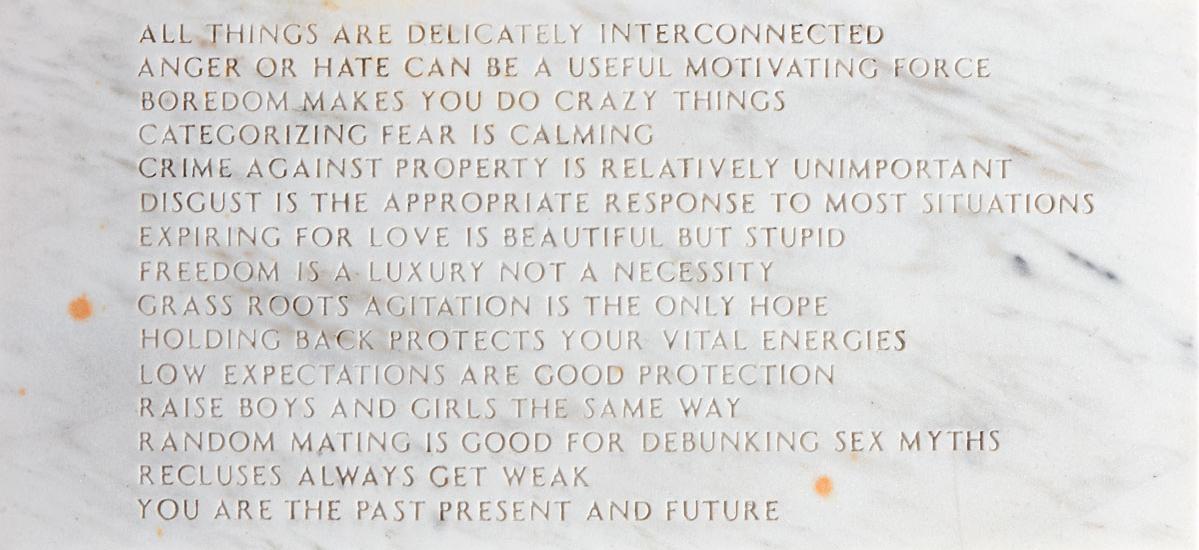
Phillips’ first New York auction of the 2019 season, New Now on February 27th, is considered the go-to place for the latest in cutting edge art. Featuring luminaries in the contemporary art field, the auction has works by long-term established artists, and up-and-coming innovators. With over 170 works, spanning decades, the auction includes impressive, thought-provoking, genre-challenging paintings, prints, sculpture and photography. We’re shining the lens on 10 artists known for pushing the envelope.
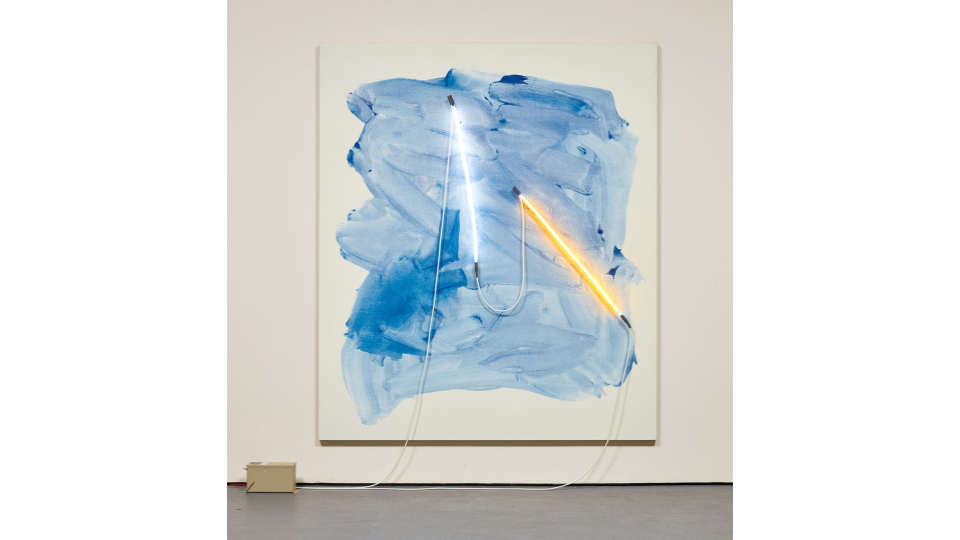
Mary Weatherford’s Truxtun leads the auction. Part of The Bakersfield Series, Truxtun is one of her first celebrated neon paintings, inspired by the cityscape of Bakersfield, CA. This eye-catching piece combines painted organic, abstract shapes of graduated, translucent color with brightly lit neon tubes. The power cords are thoughtfully draped across the canvas as part of the composition, creating a three-dimensional drawing with the glowing, angular tubes and the bright paint. Born in 1963, Weatherford lives and works in Los Angeles.
Mary Weatherford, Truxtun, 2012
Flashe and neon on linen
93 x 79 x 4 in. (236.2 x 200.7 x 10.2 cm.)
Estimate: $250,000 - 350,000
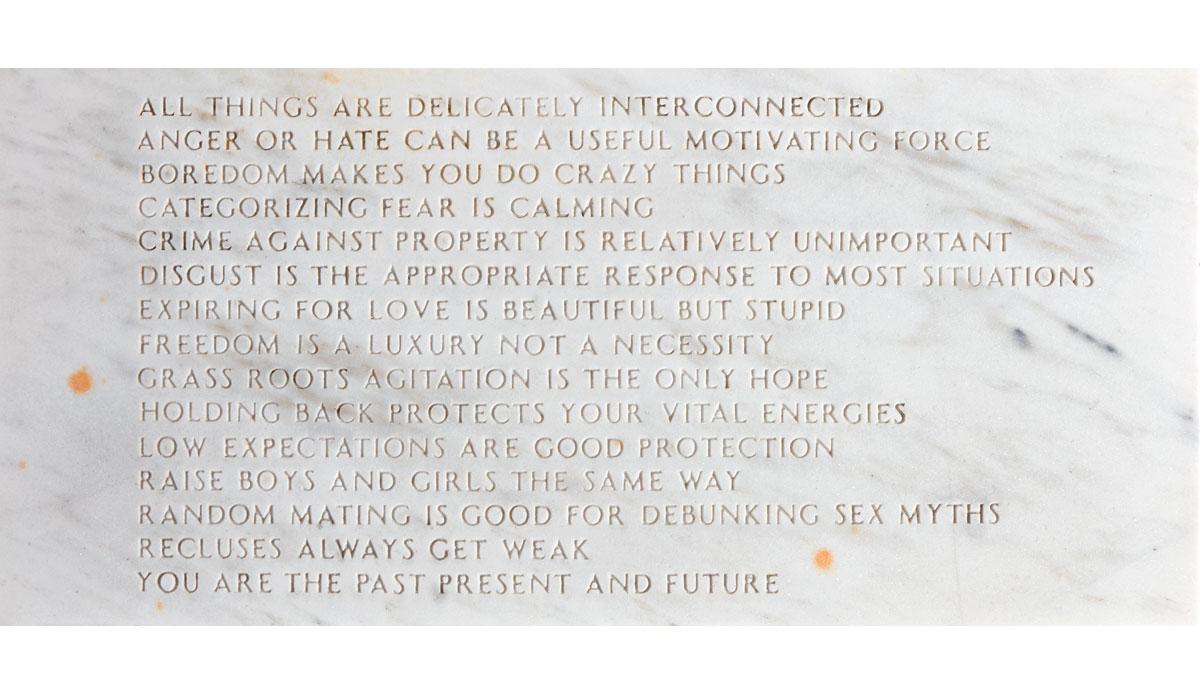
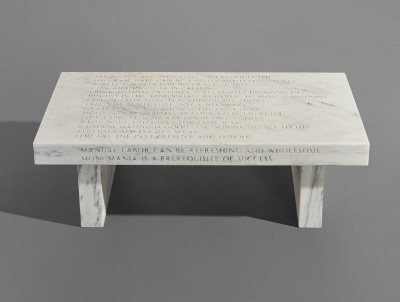 An American neo-conceptual artist, based in Hoosick Falls, New York, Jenny Holzer has been active in the art world since the mid-’70s. Famous for using public spaces to deliver bold ideas in the form of Truisms, they are designed to encourage reflective thought by passers-by. Truisms: All things are delicately interconnected..., is a stone bench carved with poetic pronouncements about a number of themes, including racial and gender equality, freedom, politics, violence and oppression.
An American neo-conceptual artist, based in Hoosick Falls, New York, Jenny Holzer has been active in the art world since the mid-’70s. Famous for using public spaces to deliver bold ideas in the form of Truisms, they are designed to encourage reflective thought by passers-by. Truisms: All things are delicately interconnected..., is a stone bench carved with poetic pronouncements about a number of themes, including racial and gender equality, freedom, politics, violence and oppression.
Jenny Holzer, Truisms: All things are delicately interconnected..., 1987
Royal Danby marble bench, number 1 from an edition of 3
17 x 54 x 25 in. (43.2 x 137.2 x 63.5 cm.)
Estimate: $250,000 - 350,000
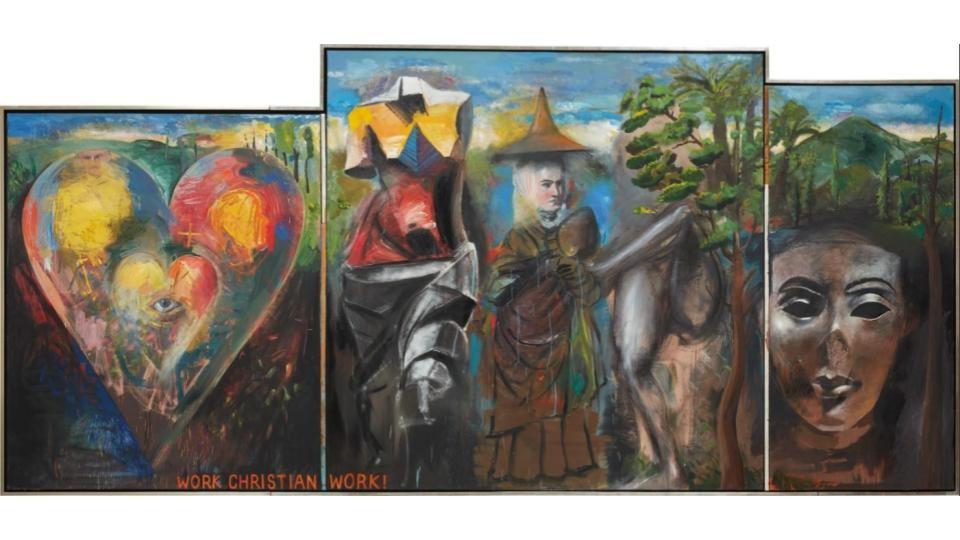
An American Pop artist, Jim Dine (born 1935) is sometimes considered part of the Neo-Dada movement. Dine initially made a name for himself orchestrating Happenings in 1959 with artists Claes Oldenburg, Allan Kaprow, and musician John Cage. In 1962, he was part one of the first Pop art exhibitions. Work, Christian, Work! is an homage to Dine’s friend, celebrated poet Robert Creeley, whom he first met in 1967. The dreamlike triptych contains his signature motif, the heart, as well as a headless Venus de Milo and various classic-type imagery superimposed over a forested scene. Dine deftly combines bright colors and chiaroscuro to create a powerful piece.
Jim Dine, Work, Christian, Work! (after Creeley), 1987
oil on canvas, in 3 parts
85 x 182 in. (215.9 x 462.3 cm.)
Estimate: $100,000 - 150,000
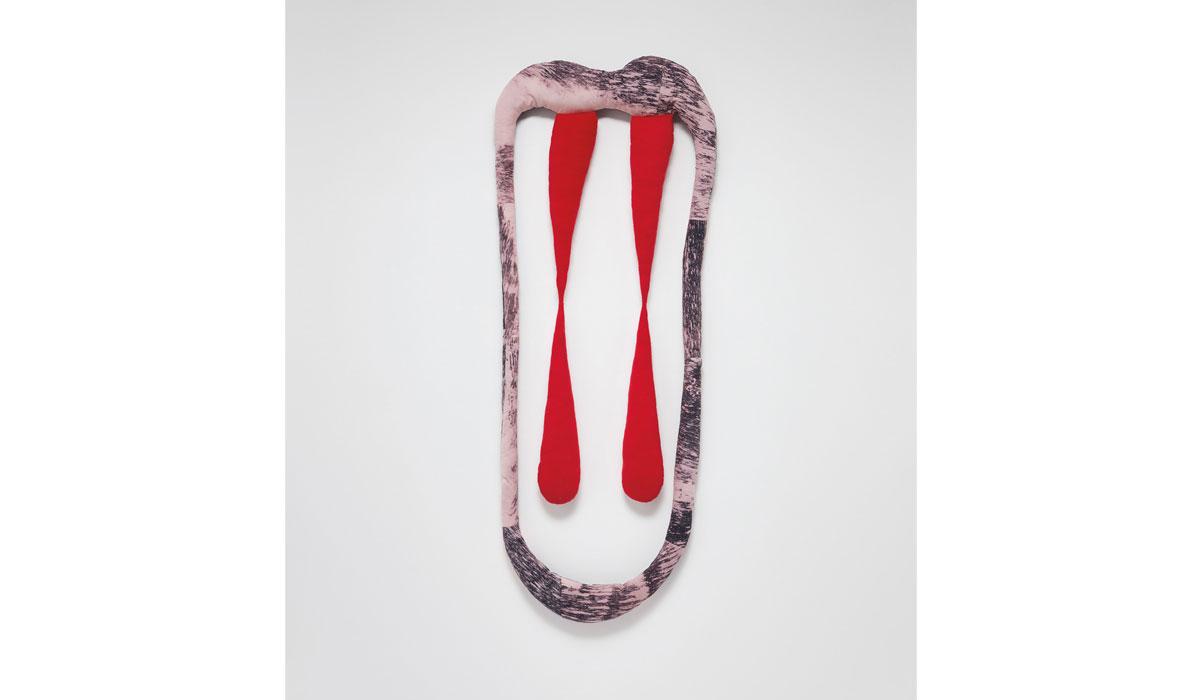
Los Angeles-based multi-media artist Sterling Ruby (born 1972) explores a number of themes in his work, including psychology, globalization, gender, and sexuality. In 2008, New York Times Art critic Roberta Smith pronounced Ruby one of the most interesting emerging contemporary artists, and his reputation has only continued to build: Ruby’s work is highly sought after and he recently collaborated with Calvin Klein. Ruby’s sculpture Vampire 24 displays his gritty, urban style and eclectic use of materials.
Sterling Ruby, Vampire 24, 2011
fabric and fiber fill
86 x 27 x 6 in. (218.4 x 68.6 x 15.2 cm.)
Estimate: $18,000 - 25,000
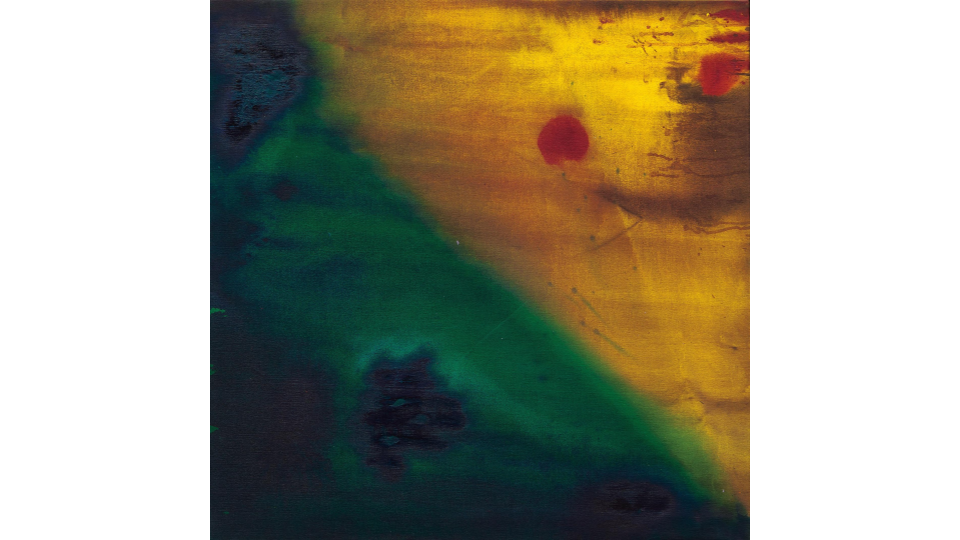
A color field painter and lyrical abstractionist, Sam Gilliam’s (born 1933) innovations with color and canvas in the late 1960s and early 1970s established him as one of the foremost artists of the Washington Color School. Gilliam’s fluid composition So They Can mimics the apparently effortless rhythm of jazz. Luminous fields of color merge and swell, as swaths of textured golden-yellow and blue merge into a liquid green, with bright red accents. Over 40 years after Gilliam was the first African American artist to represent the United States at the Venice Biennale in 1972, the abstract painter’s career is enjoying a renaissance. With a recent major commission for the National Museum of African American History and Culture and a return to the Venice Biennale in 2017, Gilliam’s brilliance is being recognized by another generation.
Sam Gilliam, So They Can, 1966
acrylic on canvas
36 x 36 in. (91.4 x 91.4 cm.)
Estimate: $120,000 - 180,000
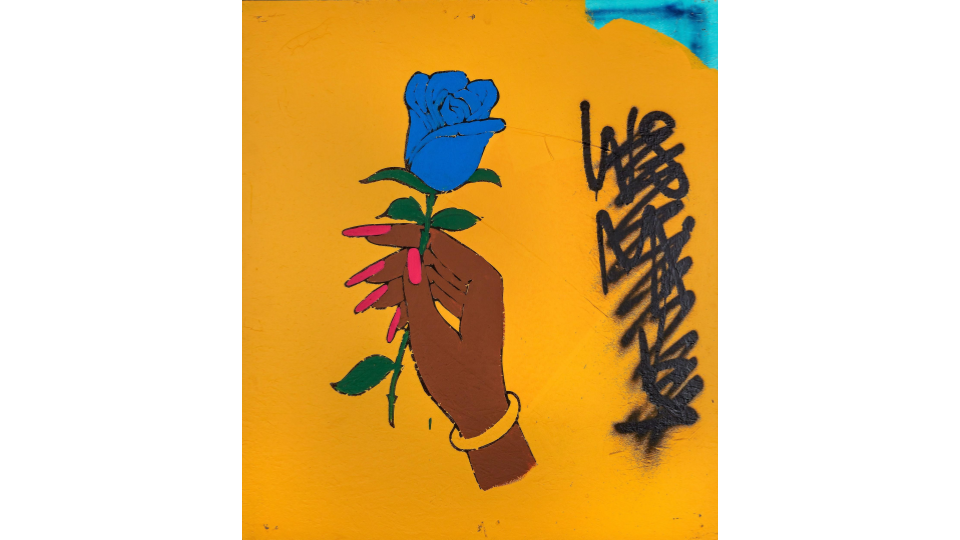
Pronounced "The Art World’s New 'It' Boy" by Vulture Magazine in 2016, Awol Erizku (born 1988) lives and works in New York City and Los Angeles. An Ethiopian-American contemporary artist, his primary media are painting, photography, sculpture and video installation. Hip hop and contemporary African American culture inform his work. Erizku’s painting Tell Me the Price combines pop art, graffiti art and minimalism. A woman’s hand, dark-skinned with bright pink lacquered nails, holds a blue rose against a vivid orange background, highlighted with a black spray painted tag in the upper corner.
Awol Erizku, Tell Me the Price, 2017
acrylic and spray paint on panel
42 1/2 x 38 in. (108 x 96.5 cm.)
Estimate: $12,000 - 18,000
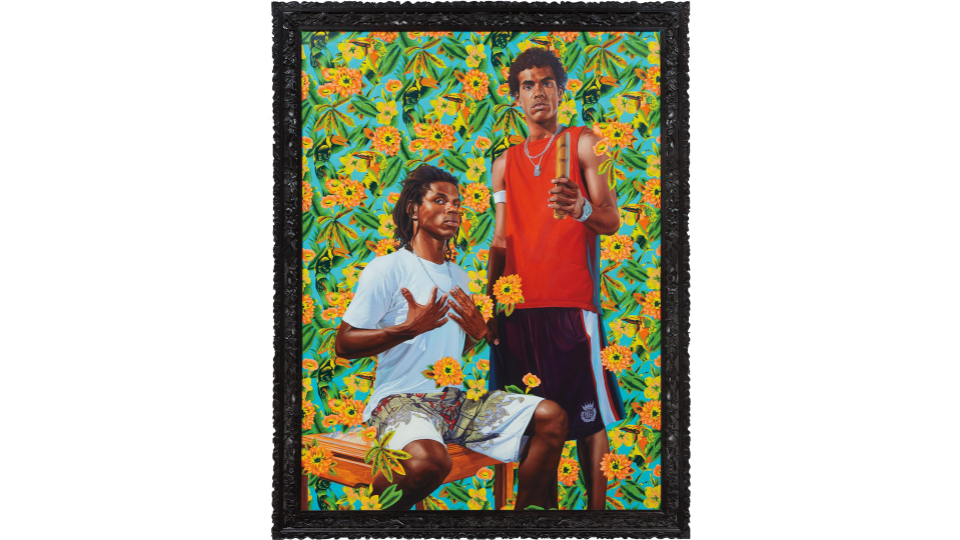
Kehinde Wiley’s history-making 2018 portrait of Barack Obama for the Smithsonian National Portrait Gallery in Washington, D.C., was the first official presidential portrait painted by an African American artist. Using eye-popping color and lush, botanical backgrounds, Wiley’s photo-realistic portraits generally portray regular people he meets on the streets of Harlem. In Untitled (The World Stage: Brazil) (2012), two young men in contemporary urban clothes pose against vibrant turquoise wallpaper, adorned with bright orange flowers. His subjects’ poses reference classic European portraiture by masters such as Titian and Velázquez. By recasting everyday African Americans in these traditional poses, Wiley draws attention to the lack of historical African American representation, while celebrating African Americans and their culture, firmly establishing them within the cultural and historical narrative.
Kehinde Wiley, Untitled (The World Stage: Brazil), 2012
oil on canvas, in artist's frame
107 x 83 in. (271.8 x 210.8 cm.)
Estimate: $120,000 - 180,000
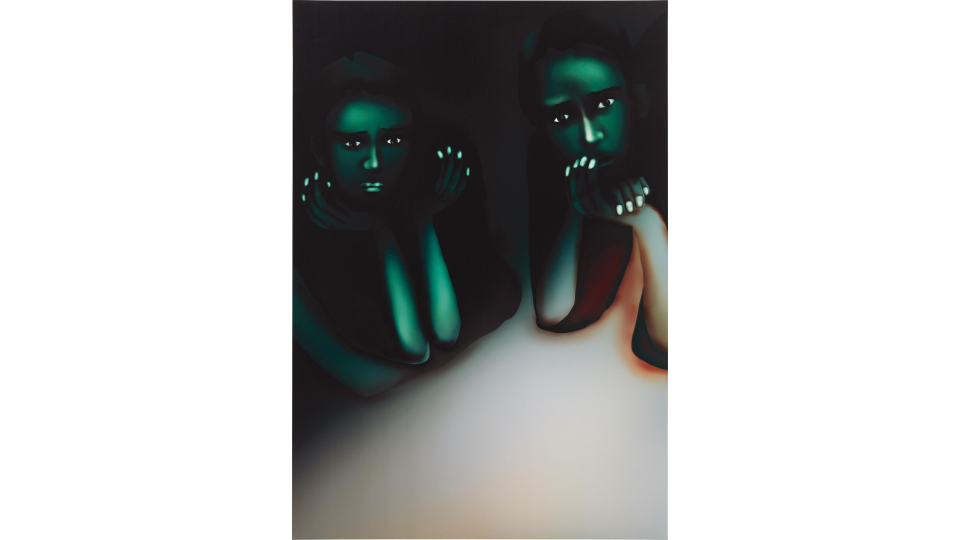
Heralded as one of 20 female artists pushing forward figurative painting by artsy.net in 2016, Louisa Gagliardi brings a digital noir sensibility to portraiture. Trained in graphic design, Swiss artist Gagliardi (born 1983) combines digital art with painting to produce hauntingly surreal portraits. In the deliciously mysterious 8:30 pm, two women’s faces and hands are captured in a deep, brilliant green—a color palette reminiscent of a photo negative, their nails glowing in the otherworldly light.
Louisa Gagliardi, 8:30 pm, 2016
ink and nail polish on PVC vinyl
65 x 45 1/4 in. (165.1 x 114.9 cm.)
Estimate: $5,000 - 7,000
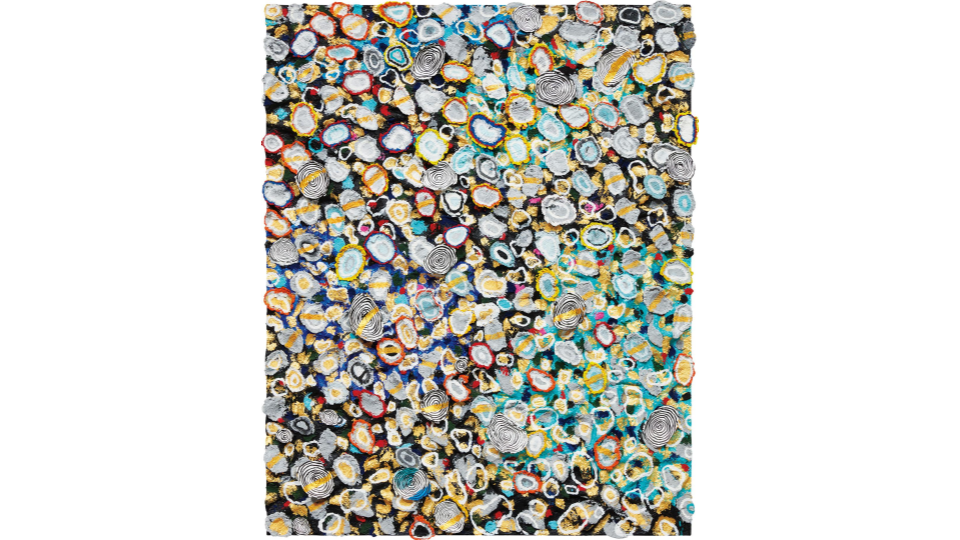
Originally from Lebanon, Nabil Nahas (born 1949) uses geometric motifs and decorative patterns inspired by Levantine art and architecture in his abstract paintings. He integrates traditional Western abstract painting, pointillistic and impressionistic styles into his work, sometimes incorporating imagery and objects from nature. His wonderfully textural Untitled is a prime example of this, for which the artist uses paint and pumice to create a repeated pattern of bright, circular stone shapes. The entire composition feels like a mass of multi-colored coral or a closeup of sea anemone.
Nabil Nahas, Untitled, 2006
acrylic and pumice on canvas
60 x 48 in. (152.4 x 121.9 cm.)
Estimate: $70,000 - 90,000
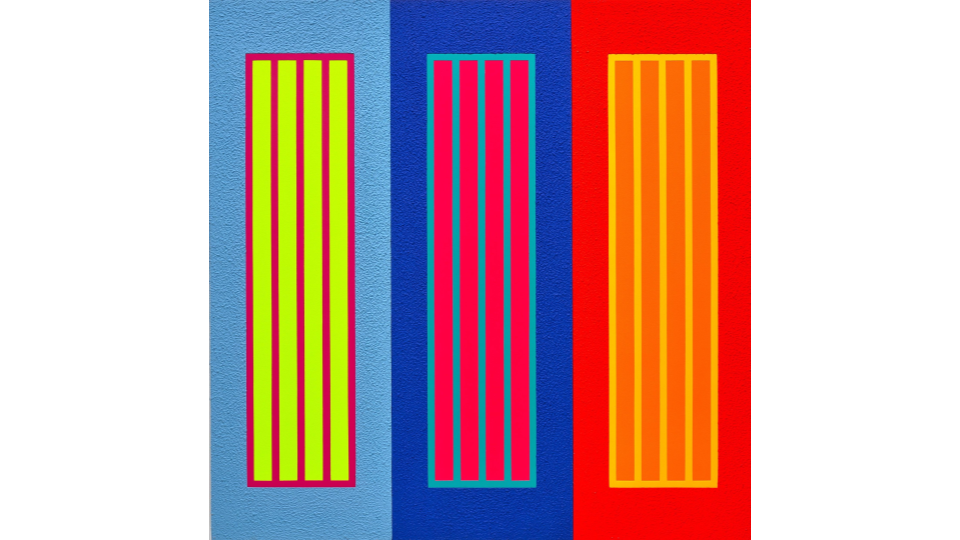
Three Prisons is an example of Peter Halley’s Day-Glo geometric paintings. A central figure in the Neo-Conceptualist movement of the 1980s, Halley (born 1953) uses fluorescent Day-Glo paint and geometric grids to create his own visual language. Squares are “prisons” or “cells” and the lines that connect them are “conduits.” Influenced by the urban grid of New York City and the geometry of computer networks and components, his work has a digital, sci-fi, pop-futuristic aesthetic.
Peter Halley, Three Prisons, 2009
acrylic, DayGlo acrylic and Roll-A-Tex on canvas, in 3 parts
60 1/4 x 60 1/4 in. (153 x 153 cm.)
Estimate: $60,000 - 80,000
Megan D Robinson
Megan D Robinson writes for Art & Object and the Iowa Source.



